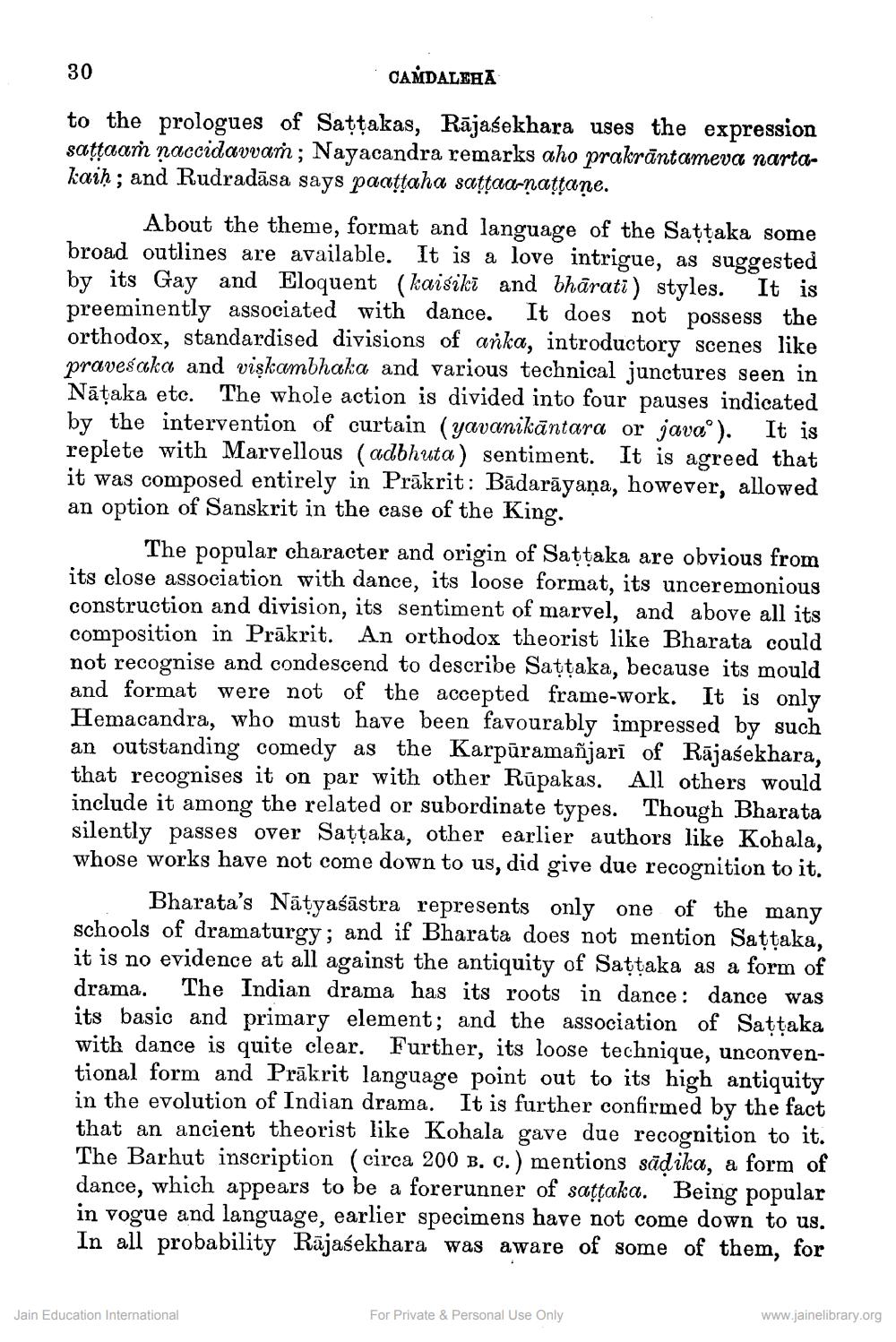________________
30
CAMDALEHA
to the prologues of Sattakas, Rājasekhara uses the expression sattaań naccidavvaṁ; Nayacandra remarks aho prakrāntameva nartakaiḥ; and Rudradāsa says paattaha sattaa-nattane.
About the theme, format and language of the Sattaka some broad outlines are available. It is a love intrigue, as suggested by its Gay and Eloquent (kaisiki and bhārati) styles. It is preeminently associated with dance. It does not possess the orthodox, standardised divisions of anka, introductory scenes like praveśaka and viskambhaka and various technical junctures seen in Nāțaka etc. The whole action is divided into four pauses indicated by the intervention of curtain (yavanikāntara or java"). It is replete with Marvellous (adbhuta) sentiment. It is agreed that it was composed entirely in Prākrit: Bādarāyaṇa, however, allowed an option of Sanskrit in the case of the King.
The popular character and origin of Sattaka are obvious from its close association with dance, its loose format, its unceremonious construction and division, its sentiment of marvel, and above all its composition in Prākrit. An orthodox theorist like Bharata could not recognise and condescend to describe Sattaka, because its mould and format were not of the accepted frame-work. It is only Hemacandra, who must have been favourably impressed by such an outstanding comedy as the Karpūramañjarī of Rājasekhara, that recognises it on par with other Rūpakas. All others would include it among the related or subordinate types. Though Bharata silently passes over Saţtaka, other earlier authors like Kohala, whose works have not come down to us, did give due recognition to it.
Bharata's Nāțyaśāstra represents only one of the many schools of dramaturgy; and if Bharata does not mention Saţtaka, it is no evidence at all against the antiquity of Sattaka as a form of drama. The Indian drama has its roots in dance: dance was its basic and primary element; and the association of Sattaka with dance is quite clear. Further, its loose technique, unconventional form and Prākrit language point out to its high antiquity in the evolution of Indian drama. It is further confirmed by the fact that an ancient theorist like Kohala gave due recognition to it. The Barhut inscription (circa 200 B. c.) mentions sādika, a form of dance, which appears to be a forerunner of sațţaka. Being popular in vogue and language, earlier specimens have not come down to us. In all probability Rājasekhara was aware of some of them, for
For Private & Personal Use Only
www.jainelibrary.org
Jain Education International




